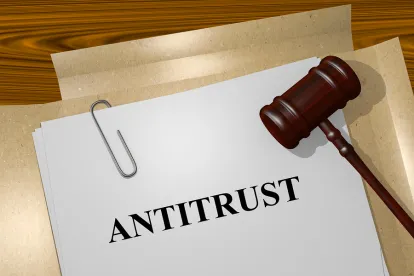Three recent antitrust merger reviews involving nascent competition demonstrate enforcers are paying close attention to acquisitions by industry leaders of emerging, but early-stage competitors. The US antitrust agencies have been criticized for allowing leading technology companies to extend their entrenched positions to multiple markets or technologies through acquisitions. We are now seeing regulators increasing their scrutiny of acquisitions of nascent competitors that were positioning themselves to challenge an entrenched, strong rival.
WHAT HAPPENED:
-
Illumina / Pacific Biosciences. On December 17, 2019, the Federal Trade Commission (FTC) announced an action to block Illumina Inc.’s proposed $1.2 billion acquisition of Pacific Biosciences of California (PacBio).
-
The FTC complaint alleged the acquisition of a competitor in the DNA sequencing industry would substantially lessen competition by “eliminating current competition and preventing future competition.” Illumina is the world’s leading supplier, but PacBio has made “significant technological advancements” in recent years, positioning PacBio as “a closer alternative to Illumina than ever before.”
-
Note: In addition to the Clayton Act Section 7 claim relating to the substantial lessening of competition, the complaint also alleged a Sherman Act Section 2 violation for monopolization. The elements of a Section 2 claim involve a firm with monopoly power taking steps to maintain that position through exclusionary conduct. The government may view this as an easier, or at least alternative, path to victory compared to a Clayton Section 7 claim when the acquirer has a dominant position and the target has not yet had a meaningful market impact, but is likely to in the future.
-
-
Roche / Spark. On December 16, 2019, the FTC closed its investigation into Roche Holding AG’s proposed acquisition of Spark Therapeutics, Inc., without seeking a remedy. This concluded a 10-month investigation into whether the merger would lessen competition in the US market for Hemophilia A therapies. The FTC published a closing statement explaining its analysis. Roche’s Hemlibra is the leading Hemphilia A therapy, and Spark had a potentially competing Hemophilia A gene therapy treatment in Phase 3. Spark’s product is a completely new type of treatment for Hemophilia A through gene therapy and thus has a different mechanism of action than Hemlibra and is expected to target a different patient population. Nevertheless, the FTC still conducted a lengthy investigation.
-
After its investigation, the Commission found that the evidence “did not indicate that Roche would have the incentive to delay or terminate Spark’s developmental effort for its hemophilia A gene therapy, or that the acquisition would affect Roche’s incentives regarding [its hemophilia treatment drug] Hemlibra.”
-
As part of its closing statement, the FTC Commissioners said the FTC will “continue to closely scrutinize acquisitions by incumbents of emerging competitors.”
-
-
Sabre / Farelogix. On August 20, 2019, the Department of Justice (DOJ) sued to block Sabre Corporation’s $360 million acquisition of Farelogix, Inc. The case remains in litigation. DOJ alleged that:
-
The acquisition in the airline booking service industry would have brought together the largest global distribution service in the United States with a disruptive competitor that had introduced new technology and, according to DOJ, was poised to grow significantly.
-
According to AAG Makan Delrahim, “Sabre’s proposed acquisition of Farelogix is a dominant firm’s attempt to take out a disruptive competitor that has been an important source of competition and innovation. If allowed to proceed, the acquisition would likely result in higher prices, reduced quality, and less innovation for airlines and, ultimately, traveling American consumers.”
-
WHAT THIS MEANS:
-
Clients with a large market share contemplating purchasing a small, emerging competitor or potential entrant must closely analyze the potential antitrust issues.
-
The FTC and DOJ complaints in the PacBio and Farelogix matters cite damaging internal documents that strengthen the regulators’ challenges. Companies must carefully review internal documents before proceeding with an acquisition of a nascent competitor.
-
Potential competition issues often arise in the life sciences industry because relevant competing products may be in development or clinical trials. Antitrust enforcers take a close look at these products even where they are not yet marketed. They appear increasingly focused on competition issues involving very early-stage products.
-
It is worth noting that the UK Competition and Markets Authority (CMA) is currently in a Phase 2 investigation for both PacBio and Farelogix, and there was close coordination between the US antitrust regulators and the CMA in those transactions and in Spark. As a result, clients acquiring companies, even with a minor presence in the United Kingdom, must carefully assess whether the CMA will investigate. The CMA is becoming increasingly significant in light of Brexit.





 />i
/>i

